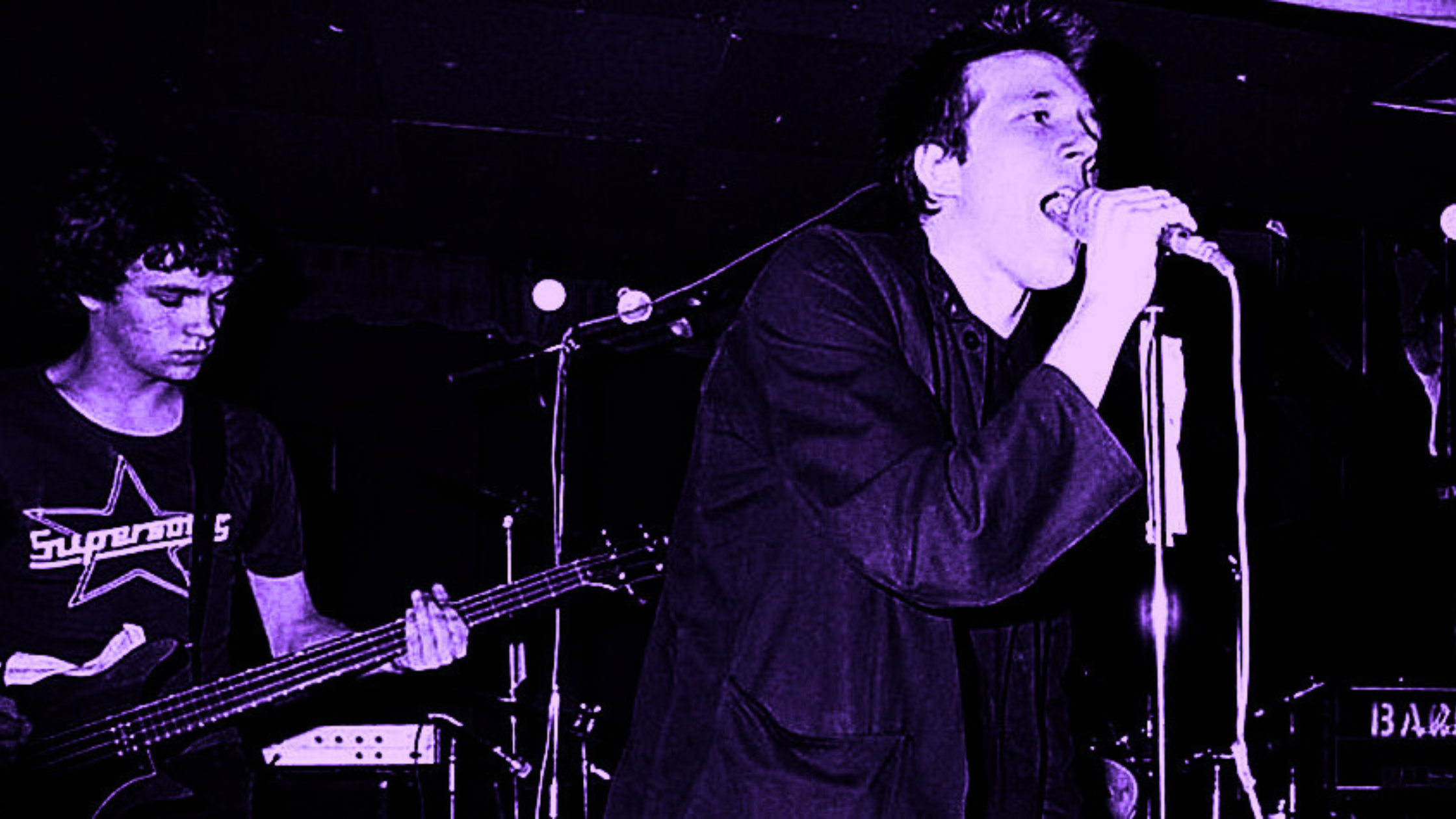Action Time Vision: How Alternative TV Cracked the Punk Rock Image
In a 1970’s punk culture obsessed with image and aggression, London’s Alternative TV brought something more fragile, more fractured, and more frighteningly real.
If punk was supposed to be a clean break from the howling yawn that was 70’s rock music, Alternative TV were the scribblers blurring the margins. Formed in 1977 by former bank clerk Mark Perry, the cult of ATV were a band born out of disgust with an increasingly consumerist and superficial world. Despite Perry’s Sniffin’ Glue fanzine becoming the bible of first-wave punk, he grew bored of documenting an already stale scene, instead opting to throw himself into the furnace. DIY or die wasn’t a slogan for Perry — it was a mission statement.
The earliest incarnation of the band included Alex Fergusson on guitar (later of Psychic TV), adding a pinch of experimental anti-style to the slowly evolving line-up. ATV’s first single, Love Lies Limp was a flexi-disc giveaway (a flaccid, floppy version of a vinyl LP that was quite popular at the time) bundled with the final issue of Sniffin’ Glue. This wasn’t lo-fi entertainment, this was no-fi, a limping anti-love song that, with it’s outsider reggae backdrop, announced Perry had no interest in punk orthodoxy.
Then came How Much Longer one of punk’s earliest acts of self-reflection. ”How much longer will people wear Nazi armbands and dye their hair?” Perry barked — a clear middle finger to the codified dress-up already taking root in punk rock England. These lyrics weren’t just a blatant finger-point at a growing number of punk rebels turned fashion conformists, it was an inward self-reflection. What the hell were we doing?
ATV’s debut album The Image Has Cracked (1978) is one of punk’s finest, yet strangest, of first LPs. It opens with Alternatives, a live spoken-word rant that feels less like a song and more like an on-stage exorcism. The album stumbles, skids, and sometimes soars, and offers a prickly, uneven, transcendent journey for the curious listener. It’s part punk manifesto and part performance-art meltdown. Tracks like Still-Life preaches disaffection with a dub pulse, while Nasty Little Lonely continues the dub texture thrusting the album into a strange emotional terrain, that becomes more collage than record, where nothing is resolved. I guess that was the point.
The moment of rupture came when Vibing Up the Senile Man (Part One) was released in 1979. This was the bomb that cleared the room — no hooks, no choruses, just free-jazz skronk, poetry fragments, detuned pianos, dissonant electronic skitters that sound like a theremin being drowned in a piss fountain, and existential collapse. Critically, the album was mauled. Fans walked out, and while punks muttered words like “pretentious” and “bollocks”, Perry smiled. He said it sounded like “a nervous breakdown.” And it did, making rival post-punkers Public Image Ltd. sound like Coldplay. And yet, Vibing Up the Senile Man laid down the blueprint for noise rock, art-punk, industrial, and abstract experimentation for decades to come.
Imploding in 1979, Alternative TV reformed in 1981 with a new lineup and a new album. Strange Kicks flirted with synth-pop and lounge noir; an oddball pivot with slicker production, catchier melodies, and even some dancefloor flirtation. But never fret — beneath the gloss, Perry still sounds like he’s disintegrating on purpose. Think of Strange Kicks as the equivalent to Bowie’s Low — detached, moody, elegant, and slightly toxic.
Peep Show (1987) was lo-fi dystopia on a dead TV set. This largely ignore ATV masterpiece features dark synth textures, a minimal, no wave approach and, fused with Perry’s lyrical despair, offers a creeping digital dread that pre-dates IDM by a decade.
In the 2000s, Revolution and Opposing Forces brought Perry back, older but no less biting, weaving post-punk groove and narrative lyrics with raw, sardonic truth. His voice — by now cracked and haunted — only made the records more real.
And even if most didn’t quite get them at the time, ATV’s ripple effect is undeniable. You can hear it in the skeletal funk of The Fall, the tape-hiss surrealism of Swell Maps, and the looped paranoia of This Heat. Sonic Youth carried some of that damaged DNA into New York’s no wave mess, while Cabaret Voltaire and early industrial outfits borrowed ATV’s distrust of structure. Garage-punk revivalists Thee Mighty Caesars covered Action Time Vision like it was a sacred text scrawled on chip shop parchment.
Dub experimentalists like On-U Sound and African Head Charge latched onto Perry’s tape-loop chaos and skeletal anti-rhythms, layering echo and collapse as gospel. Noise merchants Skullflower, Nurse With Wound, and modern beat anarchists’ clipping style have all walked through doors ATV cracked open in 1979. Sleaford Mods have cited them as proto-aggro poets. And maybe most crucially, the entire DIY cassette underground, from bedroom synth mutants to lo-fi basement shamans, owe something to Perry’s “fuck the format” approach. ATV didn’t just influence sound — they modeled attitude.
Alternative TV never played the game. They didn’t want your scene, your praise, or your record deal. What they offered instead was something rarer: a brutal honesty, wrapped in tape hiss and feedback, unwilling to compromise. In a world full of revivalists and reenactments, ATV still sound like the future — broken, beautiful, and defiantly unmarketable. Long may they remain uncracked.
© Dot Dash Press













